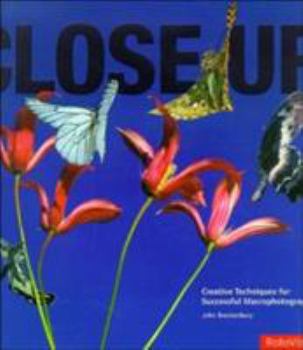Close Up: Creative Techniques for Successful Macrophotography
Nature offers the photographer a wondrous diversity of subjects, and, happily, its inspiration is all around us. It is the ultimate master canvas for creative interpretation. Most often, though, we... This description may be from another edition of this product.
Format:Hardcover
Language:English
ISBN:2880467829
ISBN13:9782880467821
Release Date:January 2004
Publisher:Rotovision
Length:160 Pages
Weight:2.40 lbs.
Dimensions:0.7" x 10.1" x 10.2"
Customer Reviews
2 ratings
Inspiration
Published by Thriftbooks.com User , 17 years ago
I have a strong interest in photography & have shot over three thousand photos this year. I never realized how restricted I had become. After reading John's magnificent book, I have become inspired to break out of the circle & into a more creative outlook. His photos are not only inspiring, but beautiful. The techniques are fun & limitless. I have shot plenty of macro subjects, but not in the way he has, nor have those concepts ever crossed my mind. Also, the language & helpful hints have the reader (me) eager to learn more. I enjoyed the book very much & know I will keep going back to it when I feel unimaginative, or on days when it seems that there is nothing to shoot - he has shown me that there are a lot of interesting things to shoot, you just have to be willing to open your eyes. Close-Up is a book that I recommend to all photographers amateur or advanced - even if you have never used a camera outside of a snapshot, this book is jam-packed with stimulating photography & just may inspire you to go out & see what you can do!
Astounding Photographs
Published by Thriftbooks.com User , 19 years ago
I wish I could write two reviews of this book. One would be as a book on macrophotography techniques. I would give that book one star. The other would be as a book of close-up photographs. I would give this book five stars. The thrills I encountered in this book led me to the second choice. John Brackenbury is a zoologist who has developed a distinctive style of macrophotography. He has developed special equipment that allows him not only to shot sharp, large pictures of insects, but also his own style of shooting which he calls panoramic close-up photography. His technique tries to place the camera in the position of an insect to view the world as an insect sees it. This means that not only are the photographed insects and plants tack-sharp but also the distant backgrounds like trees and buildings. He has conquered the problems of depth of field with a specialized camera that he built that can close down its aperture to f/256! He uses huge banks of special lights to provide illumination for this unusual camera. What pictures he takes! As I write, I'm looking at a large picture of a locust in mid-flight from a leaf and both the leaf and the locust are in absolute focus. You can count the hairs on the locust's legs and see each sharply etched vein in its wing. I flip to another page and look at a chrysopa in flight, framed by the sharp foreground wings of another chrysopa. The only problem with these pictures is that the insects are so sharp, and the surroundings equally sharp that the pictures seem almost fake, because this is sharper than we can see with the human eye. Moreover these pictures are not just technically superior. The author has captured a strange beauty that no human can see with the naked eye. The author has also captured some pictures that are not of insects or plants that use the same techniques, like that of a huge pair of earrings in the foreground with a much smaller woman wrapped in a shawl in the distant background, both in full focus. While these pictures exploit the technique, they leave me wondering just what is going on. The other side of the coin is that although the book is subtitled "Creative Techniques for Successful Macrophotography", I learned nothing that I could use in my own work. Even if I thought I could build a camera like Brackenbury's, there certainly isn't enough of an explanation to begin to point me in the right direction. Most photographers will learn more about close-ups of the natural world by reading the 27 pages on the subject contained in John Shaw's "Nature Photography Field Guide". And yet the pictures are so magnificent that even if I haven't learned a single thing about how I might replicate his technique, I was inspired to try to improve my own macrophotography.




